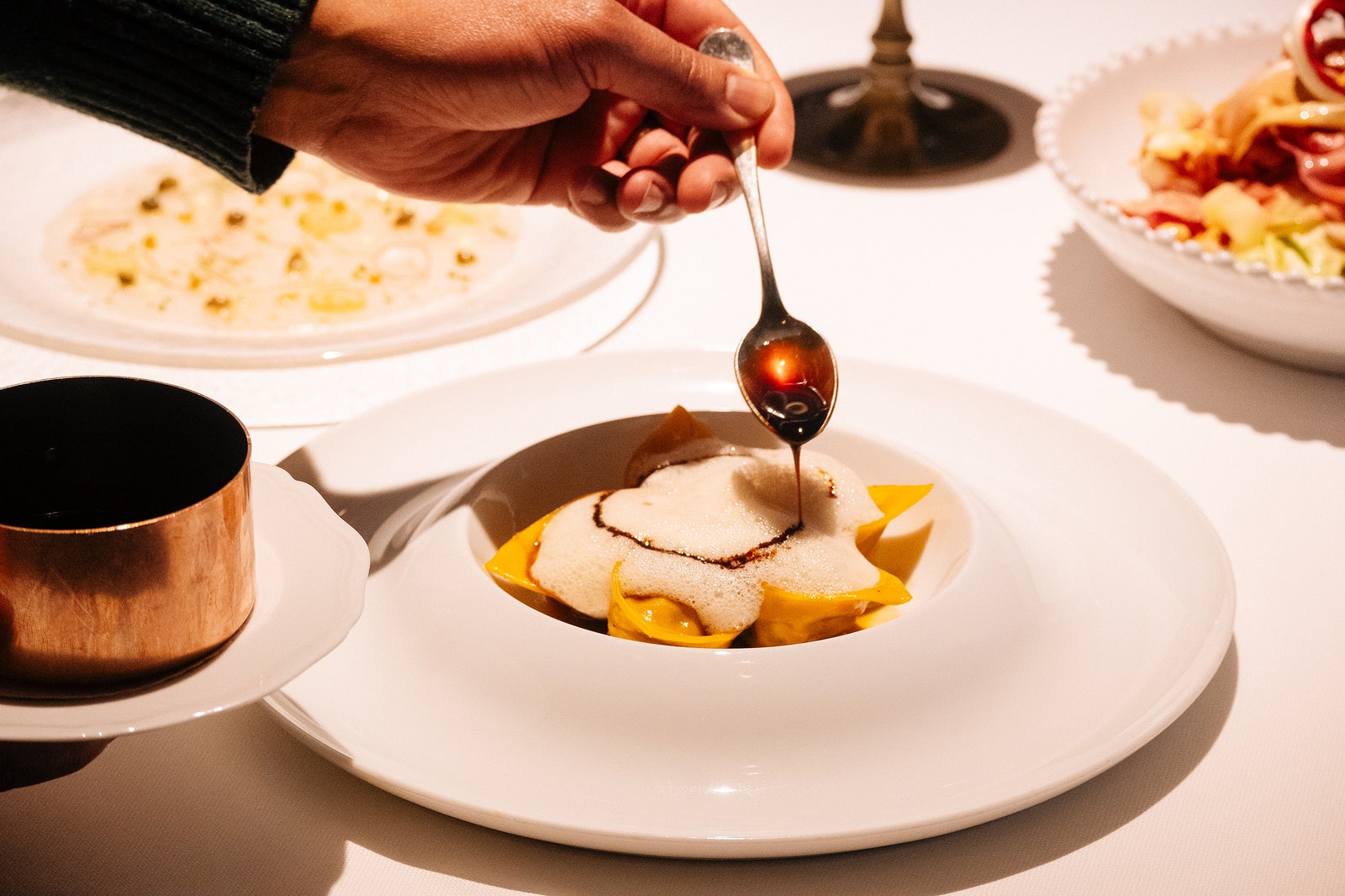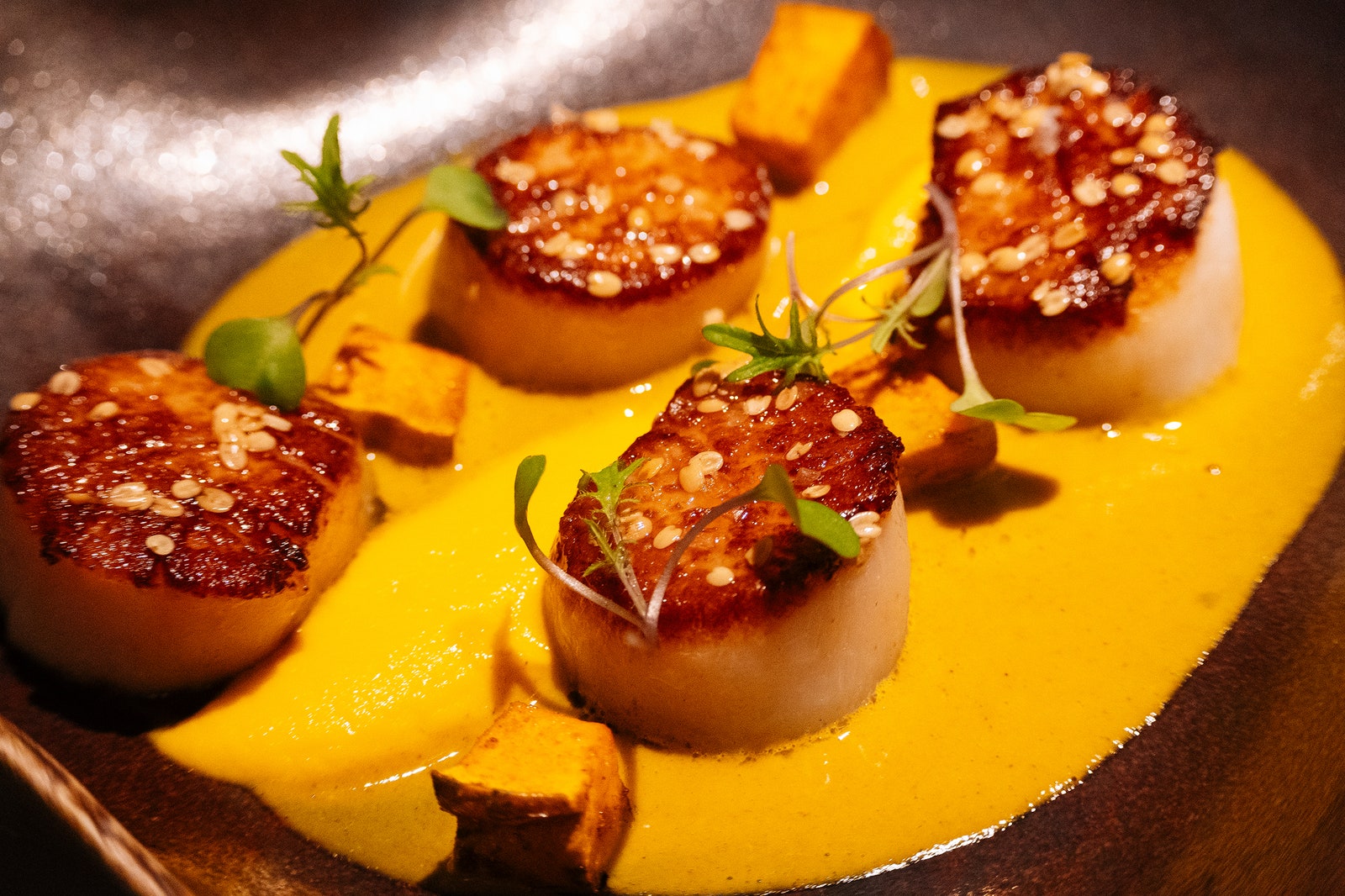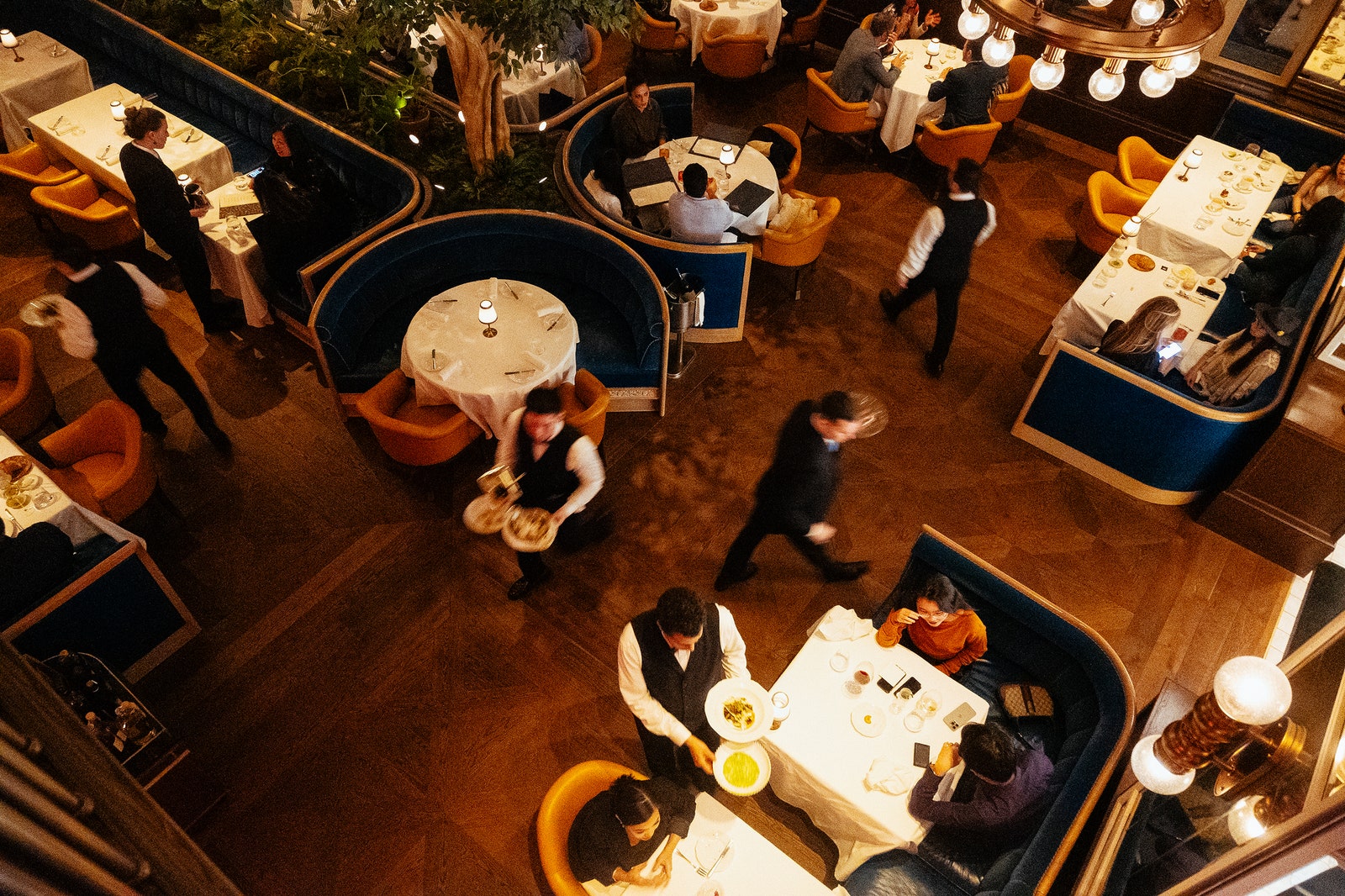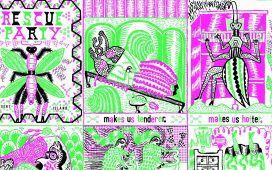The other night at Café Carmellini, Andrew Carmellini’s swanky new restaurant in the Fifth Avenue Hotel in NoMad, I was reminded of the allure of unlimited breadsticks. Despite its indelible association with a certain chain restaurant, or maybe thanks to it, the all-you-can-eat breadstick is one of those dining gimmicks that can’t help but provide a customer with immediate satisfaction. At Café Carmellini, where meals are chock-full of delightful little flourishes, the breadsticks were one of the most irresistible: a vaseful of grissini, pencil-thin, two feet long, wobbling querulously like antennae, their dimensions so unexpected, so terrifically absurd, that even the most buttoned-up diner will be tempted to engage in impromptu sword fights and tabletop drum solos. After a fair bit of age-inappropriate horsing around, my companions and I nibbled the breadsticks away to nothingness, only to realize that the vase had been replenished, via service so silken that we hadn’t even noticed. We nearly cheered out loud.
The goofily named Duck-Duck-Duck Tortellini features the titular bird in a pasta filling, a demi-glace, and a foie-gras foam.
Café Carmellini
250 Fifth Ave.
(Dishes $22-$78.)
Café Carmellini is a serious, sophisticated restaurant, with white linens on the tables and bow-tied service captains. The exquisitely appointed dining room is all blue and gold and rich brown woods, with soaring ceilings, full-sized faux trees, and discreet balcony-level box seating. The feel is at once nautical, Old World, fantastical, and stagy, like a first-class dining room on a romance-novel zeppelin, serenely crossing the Atlantic. The elegant menu matches the room; the precise and attentive service matches the menu. But—as the frankly silly breadsticks foreshadowed—the pomp of the place never lapses into tedium. Andrew Carmellini, the restaurant’s owner and chef, cut his chops as a Boulud protege, and has spent much of his career since then building restaurants (Locanda Verde, Lafayette, the Dutch) that are stylish, for sure, and sceney, sometimes, but never snobby, and always just insouciant enough to insure a surprising amount of fun. He’s been at it for several decades now—his NoHo Hospitality Group operates more than a dozen restaurants—and Café Carmellini, the first restaurant to bear his name, feels pretty straightforwardly like a legacy play. He’s personally in the kitchen almost every night, and the air may as well be pumped full of pheromones specially calibrated to attract Michelin inspectors. But, thank goodness that, for all its fanciness, it is also just a good time.
Scallops Cardoz, an homage to the late Indian American chef Floyd Cardoz, features the delicate shellfish bathed in a richly layered masala sauce.
The menu is not quite French, though it features French quantities of butter; it’s not quite Italian, though there is something undeniably Italian about the ecstatic approach Carmellini takes to vegetables. This is not a restaurant that is interested in the prevailing idea that elegance is synonymous with subtlety, or that all a fine palate needs in the way of seasoning is cream and a touch of salt. Scallops Cardoz, an homage to the late Indian American chef Floyd Cardoz, features the delicate shellfish bathed in a richly layered masala sauce, alongside basmati rice cooked with cardamom and viridian makrut lime leaves. Billi bi—a luxuriously creamy mussel soup that’s long overdue for this sort of high-profile comeback—is reimagined as the sauce for a satiny hunk of poached halibut, with a metallic swash of saffron that pointedly nudges potentially bland flavors toward more exciting references, like bouillabaisse or cioppino. It is almost difficult not to order the Chicken Gran Sasso, a bird-for-two that’s the visual climax of the written menu—it’s listed at forty-five dollars per person, which is a very genteel way of saying it’s a ninety-dollar chicken. It is, if not quite worth the price, certainly a very special special-occasion chicken. It arrives in two courses, first the light meat, and then the dark. (Splitting the bird like this, allowing for different parts to cook to differing ideal temperatures, is a clever adaptation of the French approach to cooking duck.) An oval platter of slices of breast, ermine-white and gently savory, are dressed in a rainbow mess of sweet peppers, with spiky leaves of rapini. A few minutes later, a dish arrives bearing the dark meat, a tidy stack of two crisp-skinned thighs plus a leg still bearing a gracefully curved claw, sitting atop roasted potatoes that soak up an intense brown gravy, unctuous and rich.
There’s some slightly out-of-date aesthetic fussiness at Café Carmellini, especially at the beginning of the meal. A starter of sardine toast, starring plump, bias-cut fillets of fish, oily and piquant, arrived on a plate polka-dotted with seemingly unnecessary garnishes and sauces straight out of the nouvelle cuisine. The teetering verticality of a crab mille-feuille barely survived being set down on the table, let alone being carved into with a fork and knife. There’s a lot of foam on the menu, perhaps put to best use in the spectacularly delicious, goofily named Duck-Duck-Duck Tortellini, in which the titular bird shows up thrice: as a farce to fill the pasta, as a demi-glace to dress it, and as a foie-gras foam that expertly lightens what could have been a too-too-too sort of dish. On a grand menu like this, pasta can feel like the most skippable course, but it’s a fool’s decision to pass up pasta at a Carmellini joint. Do you need cannelloni filled with lobster and golden caviar? Certainly not. But, if you’re going to have it, you may as well have it here.
The interior of the restaurant feels at once nautical, Old World, fantastical, and stagy, like a first-class dining room on a romance-novel zeppelin.
Helen, Help Me!
E-mail your questions about dining, eating, and anything food-related, and Helen may respond in a future newsletter.
Dinner at Café Carmellini is rich, no matter how many foam garnishes or how ascetic your ordering style. Even the green salad, a glorious mess of pink and green chicories, is potently sharpened with plenty of cheese. Cleverly—conscientiously—the dessert menu skews to the brisk and the bright. Carmellini has always understood the value of dessert. Some of his most intelligent decisions as a restaurateur have involved giving sufficient space and trust to pastry savants like Karen DeMasco, who was already a superstar when she was brought in to open Locanda Verde in 2009, and Jennifer Yee, whose patisserie program at Lafayette almost single-handedly brought the city into the era of macarons and mirror glazes. Here, Carmellini hands the whisk to Jeffrey Wurtz, who appears to be a particular whiz with ice creams. A creamy quenelle of coconut sorbet, toasty and slick, nearly eclipses the passionfruit semifreddo that it accompanies. A simple dish of pistachio gelato draped in cherry syrup is the concentrated, grown-up spumoni of dreams. The most fun, and most delicious, of the desserts is a grapefruit sorbetto titled A.B.C.—the initials of Carmellini’s grandmother, who according to family lore, as relayed theatrically by a service captain, greeted each day with a half-grapefruit doused in vermouth. What a dame! She’s honored here with a bottle of Dolin dry, produced with a flourish and poured from an arcing height over the baby-pink scoops of frozen citrus. The flavors blend with an almost shocking profundity: sharp, bitter, citric, floral, sweet. Who doesn’t love a little drama with dinner when it’s this much fun? ♦











